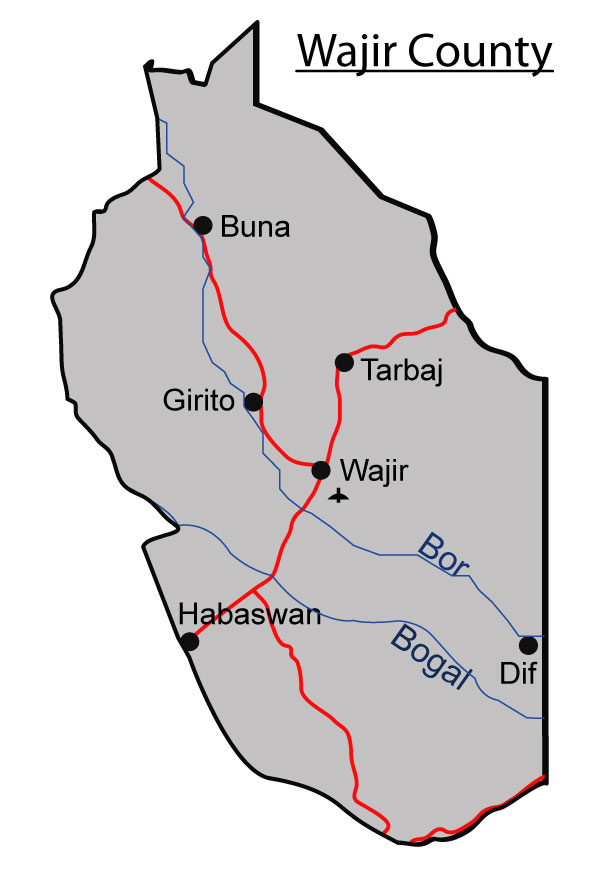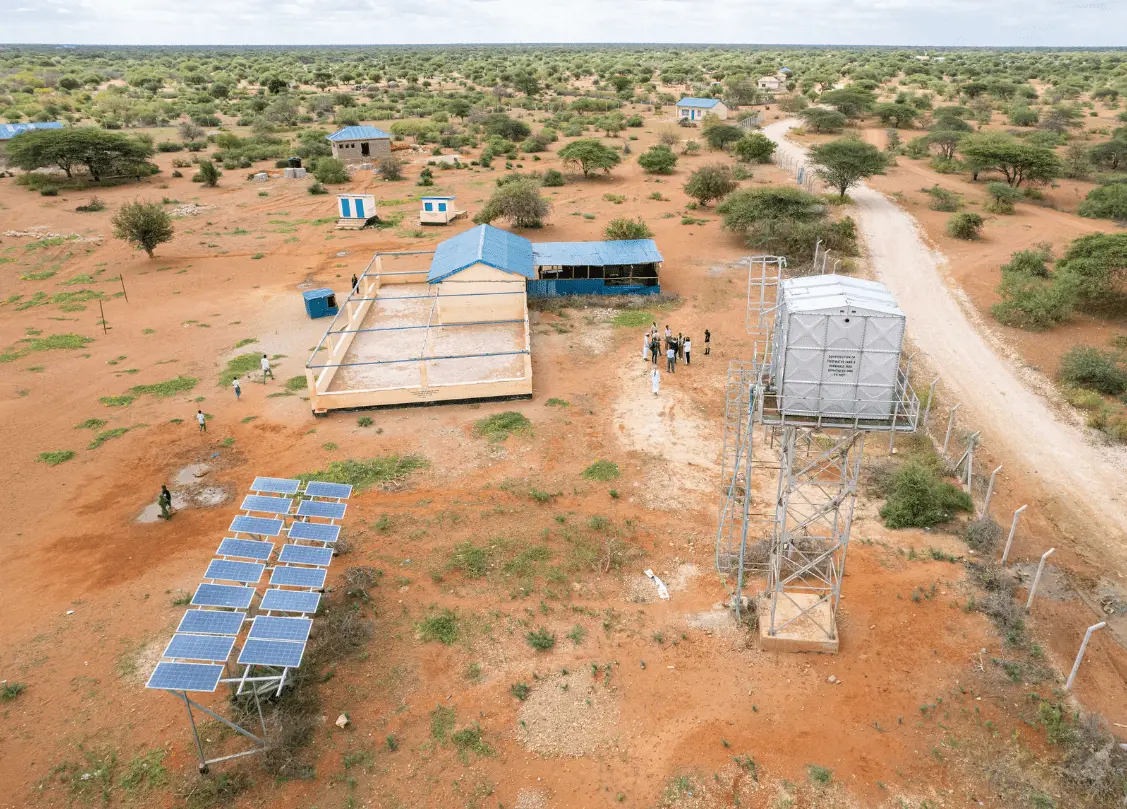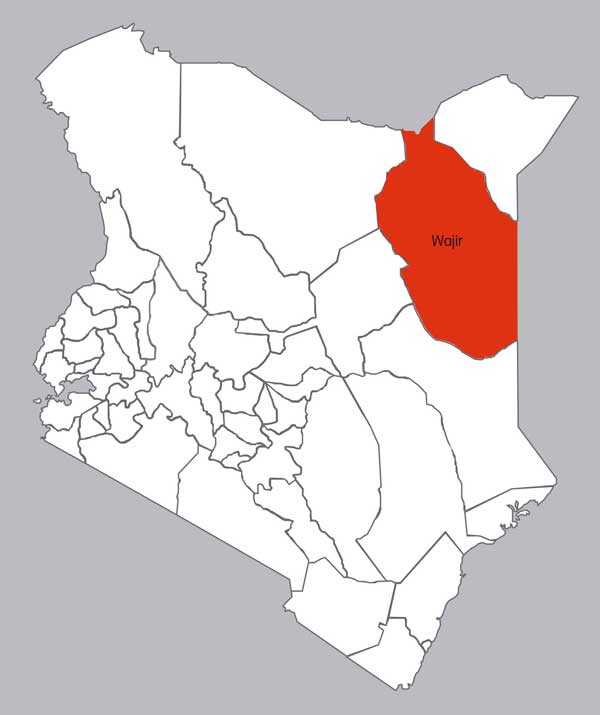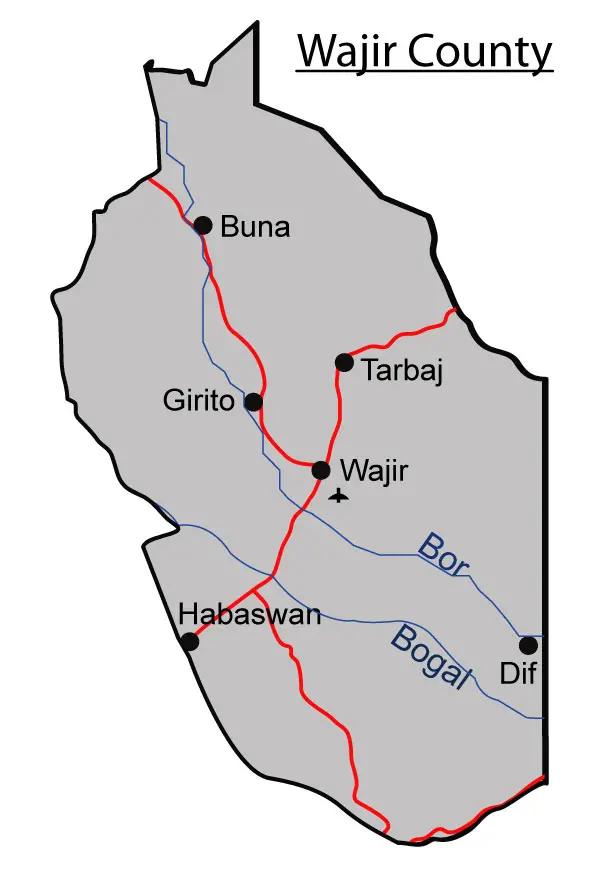Imagine exploring a land where ancient traditions blend seamlessly with modern advancements, where vibrant cultures coexist harmoniously, and where the beauty of nature captivates your senses at every turn. Welcome to Wajir County, a captivating destination nestled in the heart of northern Kenya. With its rich history, diverse communities, and breathtaking landscapes, Wajir County offers an immersive experience that will leave you spellbound. From exploring centuries-old mosques to witnessing the mesmerizing wildlife in its natural habitat, Wajir County promises an unforgettable journey unlike any other.

This image is property of opencounty.org.
Geography
Location
Wajir County is located in the northeastern part of Kenya. It shares its borders with Mandera County to the east, Somalia to the northeast, Garissa County to the south, and Isiolo County to the west. Situated at an elevation of approximately 600 meters above sea level, the county covers an area of about 56,000 square kilometers.
Terrain
The terrain in Wajir County is predominantly arid and semi-arid. It is characterized by vast plains, with scattered hills and low-lying slopes. The eastern part of the county is dominated by expansive desert landscapes, while the western region features more rugged terrain. The Great Eastern Rift Valley traverses the county, contributing to its diverse topography.
Climate
Wajir County experiences a hot and dry climate for most of the year. The region has two distinct rainy seasons, the long rains from April to June and the short rains from October to December. The average annual rainfall is relatively low, ranging from 100 to 500 millimeters. Temperatures can reach as high as 40 degrees Celsius during the dry season, making it a challenging environment to live in.
History
Early Settlement
Wajir County has a rich history of human settlement dating back thousands of years. The Cushitic-speaking Somali ethnic group is believed to have been the first inhabitants of the region. They were predominantly nomadic pastoralists, who relied on livestock herding for their livelihoods. The county’s strategic location along trade routes between the Horn of Africa and the rest of the continent led to the establishment of various settlements and the influx of diverse cultures.
Colonial Era
During the colonial era, Wajir County, like many other regions in Kenya, came under the control of the British Empire. The colonial administration introduced new forms of governance and economic systems, which had a significant impact on the local population. This period also saw the division and demarcation of land, leading to social and political tensions among different ethnic groups in the county.
Independence and Post-Independence
Wajir County gained independence along with the rest of Kenya in 1963. The post-independence period brought new opportunities and challenges for the county. Efforts were made to improve infrastructure, healthcare, and education systems. The local population also actively participated in the political process, electing leaders to represent their interests at the national level. However, the county continues to face various socio-economic and development challenges.
Demographics
Population
Wajir County has a relatively large population, with estimates suggesting it is home to over one million people. The population is predominantly composed of ethnic Somalis, who make up the majority. The county’s population density is relatively low due to its vast land area and arid climate.
Ethnicity
The Somali ethnic group is the largest community in Wajir County, accounting for a significant portion of the population. Other ethnic groups present in the county include the Borana, Degodia, and Ajuran, among others. Each group contributes to the diversity and cultural fabric of the county.
Religion
Islam is the dominant religion in Wajir County, with the vast majority of the population being Muslims. Mosques are an integral part of the local communities, serving as places of worship, social gatherings, and centers for learning.
Government
Administrative Structure
Wajir County is divided into several administrative units known as sub-counties. These include Wajir East, Wajir West, Wajir North, Tarbaj, Eldas, and Wajir South. Each sub-county is further divided into wards, which are responsible for local governance and service delivery.
County Leadership
The county is led by a Governor, who is the chief executive officer responsible for the overall administration and management of the county government. The Governor is supported by a County Executive Committee, which consists of various county executives in charge of different sectors. County departments are responsible for the implementation of policies and delivery of services to the residents.
Political Representation
Wajir County is represented in the national legislature by elected Members of Parliament (MPs). These MPs advocate for the interests of the county at the national level and participate in the legislative process. The county also has representatives at the county assembly level, who are responsible for making laws and overseeing the county government’s operations.

This image is property of elimufeynman.s3.amazonaws.com.
Economy
Main Industries
Wajir County’s economy is primarily based on agriculture and livestock rearing. Pastoralism is a traditional way of life for many residents, with livestock such as goats, camels, and sheep being a valuable source of income and sustenance. Small-scale trade and businesses also contribute to the county’s economy, offering goods and services to the local population.
Agriculture
Despite the arid climate, Wajir County has made strides in agricultural activities. Irrigation schemes and water harvesting techniques have been implemented to support crop farming. Crops such as maize, sorghum, and vegetables are cultivated, providing a source of food and income for local farmers.
Trade and Commerce
Trade and commerce play an essential role in the local economy of Wajir County. Markets and trading centers serve as hubs where goods and services are exchanged. Livestock markets are particularly vibrant, attracting traders from neighboring counties and countries. The county’s strategic location along major transport routes encourages both domestic and cross-border trade.
Infrastructure
Transportation
Wajir County has been investing in improving its transportation infrastructure. Roads connect the county to other parts of Kenya, facilitating movement of people and goods. The county’s main urban centers are linked by a network of tarmac and gravel roads. Additionally, the establishment of an airstrip has improved air connectivity, allowing for easier access to the county.
Education
The county government has prioritized education, striving to provide quality learning opportunities for its residents. Schools, both primary and secondary, have been constructed, and efforts are being made to ensure access to education for all. Tertiary institutions have also been established to cater to the higher education needs of the county’s youth.
Healthcare
Healthcare facilities and services are essential for the well-being of the population. Wajir County has made efforts to improve healthcare infrastructure by constructing hospitals, health centers, and dispensaries. These facilities aim to provide accessible and affordable healthcare to the residents, as well as address the specific health challenges faced in the region.
This image is property of lh3.googleusercontent.com.
Culture and Society
Traditions and Customs
Wajir County has a rich cultural heritage, with various traditions and customs passed down through generations. The Somali culture heavily influences the county’s way of life, with customs such as communal livestock herding and strong kinship ties being ingrained in society. Traditional dances, songs, and poetry are also an integral part of the cultural identity.
Language
The Somali language is widely spoken in Wajir County, serving as the primary means of communication. English and Swahili are also commonly understood and used, especially in formal settings such as education and government institutions.
Education
Education is highly valued in Wajir County, with efforts being made to improve access and quality. Schools play a crucial role in preserving and promoting the local culture, incorporating traditional practices and values into the curriculum. Cultural festivals and events provide opportunities for the community to celebrate and showcase their heritage.
Tourism
Attractions
Wajir County offers unique attractions for visitors interested in exploring its natural beauty and cultural heritage. The scenic landscapes, including vast plains, rocky hills, and desert formations, provide a breathtaking backdrop for outdoor enthusiasts. The county is also home to various wildlife species, including the reticulated giraffe and the Grevy’s zebra, which attract nature lovers and conservationists.
Cultural Heritage Sites
The county boasts several cultural heritage sites that offer insights into its rich history and traditions. Ancient archaeological sites, such as the Kamoose Ruins and Giriyetakale Fort, serve as reminders of the region’s past civilizations. Traditional homesteads, known as Manyattas, provide visitors with an opportunity to experience the nomadic way of life still practiced by some communities.
Wildlife
Wajir County is home to diverse wildlife species adapted to the arid environment. The Bisanadi National Reserve, located in the eastern part of the county, offers a chance to spot rare and endangered species. Visitors can embark on game drives and guided walks to observe wildlife such as elephants, lions, and various bird species in their natural habitat.

This image is property of www.umrelief.org.
Challenges
Drought and Famine
Wajir County faces recurring droughts and the threat of famine due to its semi-arid climate. Insufficient rainfall leads to water scarcity, affecting both humans and animals. The county government has been implementing strategies to address these challenges, including water harvesting projects, provision of water tanks, and promotion of drought-resistant crops.
Inadequate Services
The availability and access to basic services, such as healthcare and education, have been challenging in Wajir County. Limited healthcare facilities and qualified personnel hinder the delivery of quality healthcare services. Similarly, the lack of well-equipped schools and limited resources affect the quality of education provided to the residents.
Security Concerns
Wajir County has experienced security concerns in the past due to its proximity to conflict-prone areas. Incidents of inter-clan conflicts and terrorism poses challenges to the safety and well-being of the residents. The county government, in collaboration with national security agencies, has been working towards enhancing security measures and fostering peacebuilding initiatives.
Future Outlook
Development Projects
Wajir County has ambitious development projects aimed at improving the living conditions of its residents. Infrastructure development, including roads, schools, and healthcare facilities, is a priority. The county government is also investing in renewable energy solutions, such as solar power, to address the energy needs of the county sustainably.
Investment Opportunities
Wajir County offers attractive investment opportunities in various sectors. Agriculture and livestock rearing have the potential for growth and expansion, with opportunities for value addition and market linkages. The tourism sector holds immense potential for investors, with untapped natural and cultural attractions awaiting development.
Improving Living Standards
The county government, in collaboration with development partners, is committed to improving the living standards of its residents. Efforts are being made to enhance access to quality education, healthcare, and basic services for all. Promoting entrepreneurship and vocational training programs will empower the youth and create employment opportunities, leading to an overall improvement in the quality of life.
In conclusion, Wajir County, with its unique geography, rich cultural heritage, and diverse communities, has the potential for growth and development. Despite facing challenges such as drought, inadequate services, and security concerns, the county’s future outlook appears promising. Through investment in infrastructure, improvement of basic services, and sustainable development projects, Wajir County can thrive and provide a better quality of life for its residents.

This image is property of elimufeynman.s3.amazonaws.com.


